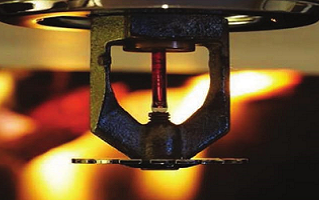Automatic Fire Sprinkler Systems: Guardians Against Disaster

Introduction
Fire is a relentless and destructive force that can ravage homes, businesses, and public spaces within minutes. To protect lives and property from the devastating effects of fires, automatic fire sprinkler systems have emerged as a powerful and proactive defense mechanism. In this article, we’ll explore the world of automatic fire sprinkler systems, delving into how they work, their benefits, and their crucial role in fire safety.
Understanding Automatic Fire Sprinkler Systems
An automatic fire sprinkler system is a sophisticated fire protection system designed to detect, control, and suppress fires quickly, limiting their spread and severity. These systems are widely used in a variety of settings, including commercial and industrial buildings, residential properties, and even vehicles like buses and trains.
How Do Automatic Fire Sprinkler Systems Work?
Automatic fire sprinkler systems operate on a simple yet highly effective principle: rapid response to heat. The system comprises several key components:
1. Sprinkler Heads: These are the visible components of the system, typically attached to the ceiling or walls. Each sprinkler head has a temperature-sensitive element, such as a glass bulb or a fusible link, which is designed to break or melt at a specific temperature.
2. Piping and Water Supply: A network of pipes runs throughout the protected area, with pressurized water ready for immediate release. Some systems use dry pipes filled with compressed air or nitrogen in environments where freezing may occur.
3. Control Valve: A control valve, often connected to an alarm system, manages the flow of water through the pipes. When a fire is detected, the control valve automatically opens, releasing water into the affected area.
4. Detection System: Fire detection systems, including heat detectors or smoke detectors, work in conjunction with the sprinklers to trigger the release of water. When the detection system senses elevated temperatures or smoke, it sends a signal to the control valve.
5. Spray Pattern: When a sprinkler head’s temperature-sensitive element breaks or melts due to heat, the head activates, spraying water over the fire in a controlled pattern. Contrary to popular belief, sprinkler systems do not activate all the sprinkler heads at once; only the heads closest to the fire are triggered.
Benefits of Automatic Fire Sprinkler Systems
1. Rapid Response: Sprinklers react almost instantly to fires, significantly reducing the time it takes to control and suppress flames. This rapid response can save lives and minimize property damage.
2. Minimized Water Damage: Automatic sprinkler systems release a controlled amount of water directly onto the fire source. This helps prevent excessive water damage compared to firefighting efforts using hoses.
3. Safety: Sprinkler systems enhance safety by containing fires and providing occupants with more time to evacuate the premises. They also reduce the risk to firefighters who can work in safer conditions.
4. Reduced Losses: By controlling fires at their incipient stage, automatic sprinkler systems can substantially reduce property losses and business interruptions, leading to cost savings for property owners and insurers.
5. Environmental Friendliness: Since sprinkler systems use water as an extinguishing agent, it will not have an impact on the environment.
Conclusion
Automatic fire sprinkler systems are a cornerstone of modern fire protection. They are designed to react swiftly and effectively, mitigating the destructive power of fires and safeguarding lives and property. As technology continues to advance, these systems evolve to become even more reliable and efficient. For any building owner or manager, investing in an automatic fire sprinkler system is not only a wise decision but also a commitment to ensuring the safety and security of people and assets. These silent guardians stand ready, poised to battle the flames and protect what matters most.